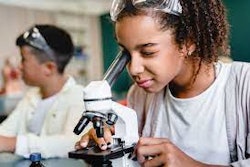MORGANTOWN, W.Va. — West Virginia University researchers have patented technology for reinforcing the T-shaped joints of concrete beams in buildings to better withstand shocks like earthquakes without breaking.
Doctoral engineering student Praveen Majjigapu and his adviser, Professor Hota GangaRao, are co-inventors and share the two patents.
At a demonstration Thursday for potential partners in an industrial lab at the university, they applied increasing pressure with a hydraulic actuator down onto a horizontal concrete beam joined to a vertical beam.
“We are trying to simulate in real life what happens in a high-rise system,” GangaRao told those present, who wore hard hats. He directs WVU’s Constructed Facilities Center funded by the National Science Foundation.
The joint was reinforced above and below with their invention – wedge-shaped modules wrapped in composite material. The horizontal beam itself appeared to start bending slightly at 40,000 pounds and cracked at 65,000 pounds of pressure at the outer edge of the composite.
Normally joints are the weakest spot and break at about 14,000 pounds, Majjigapu said. When they strengthen the joint it increases the integrity of the entire building, he said.
They’ve repeated the lab test 12 times on concrete and six on timber beam-column joints. On average it shows about five times increased joint strength, according to Majjigapu.
“We believe we can make it 10 times stronger. We’ve already got five times. That’s not an issue,” GangaRao said. Changing the module shape could increase the strength, he said.
There’s a potentially wide application for renewing older buildings, bridges and other structures, especially those built before the 1980s, the researchers said.
If their invention finds marketplace applications, GangaRao said, the school will get a very small percent.
The Constructed Facilities Center within WVU’s College of Engineering and Mineral Resources describes its mission as research and development to reduce or remedy deterioration of U.S. infrastructure.





















